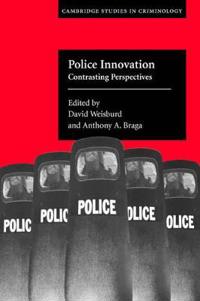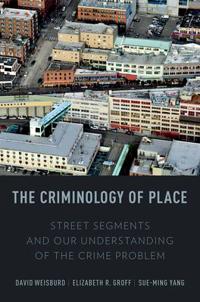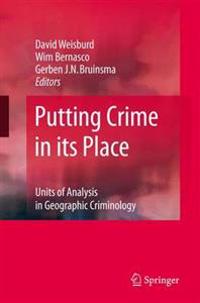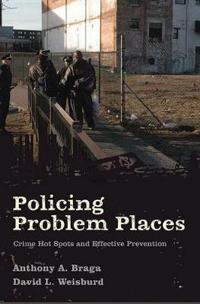Police Innovation (Pocket)
avDavid Weisburd, Anthony A. Braga, David Weisburd
ISBN: 9780521544832 - UTGIVEN: 200606Over the last three decades American policing has gone through a period of significant change and innovation. In what is a relatively short historical time frame the police began to reconsider their fundamental mission, the nature of the core strategies of policing, and the character of their relati[...]
The Criminology of Place (Inbunden)
avDavid Weisburd, Elizabeth R. Groff, Sue-ming Yang
ISBN: 9780195369083 - UTGIVEN: 2012-10The study of crime has focused primarily on why particular people commit crime or why specific communities have higher crime levels than others. In The Criminology of Place, David Weisburd, Elizabeth Groff, and Sue-Ming Yang present a new and different way of looking at the crime problem by examini[...]
White-Collar Crime and Criminal Careers (Häftad)
avDavid Weisburd, Elin J. Waring, Ellen Chayet
ISBN: 9780521777636 - UTGIVEN: 200102Studies of the criminal career to date have focused on common criminals and street crime; criminologists have overlooked the careers of white-collar offenders. David Weisburd and Elin Waring offer here the first detailed examination of the criminal careers of people convicted of white-collar crimes.[...]
Putting Crime in Its Place (Häftad)
avDavid Weisburd
ISBN: 9781441909732 - UTGIVEN: 2009-07Putting Crime in its Place: Units of Analysis in Geographic Criminology focuses on the units of analysis used in geographic criminology. While crime and place studies have been a part of criminology from the early 19th century, growing interest in crime places over the last two decades demands criti[...]
Policing Problem Places (Inbunden)
avAnthony A. Braga, David L. Weisburd, Anthony A. Braga
ISBN: 9780195341966 - UTGIVEN: 2010-10Both those who study crime and those who fight it agree that crime is not spread evenly across city landscapes. Rather, clusters of crime-a few "hot spots"-host a vastly disproportionate amount of criminal activity. Even within the most crime-ridden neighborhoods, crime concentrates at a few locatio[...]
White-Collar Crime Reconsidered (Pocket)
avKip Schlegel, David (EDT) Weisburd, Kip Schlegel
ISBN: 9781555531997 - UTGIVEN: 1994-08Divided into four sections, the volume deals with the definition and theory of white-collar crime, victimization, enforcement, and the sanctioning of organizations and individuals.[...]








